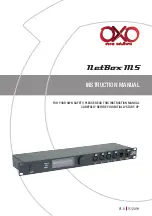
Overview
Chapter 4
Sample Applications
Overview
Developers using these components should be familiar with Microsoft Visual
C++™ 6.0 and/or Microsoft Visual Basic™. Microsoft provides several wizards
and tools that make adding COM support to your C++ or Basic applications
relatively straightforward. While it is possible to access and use these components
from other development environments, only examples for Visual C++ 6.0 and
Visual Basic are provided in this SDK. Other packages with COM support should
behave in a similar manner.
The general steps for setting up a client application are as follows:
1. Create the client project
2. Reference the COM object library (VB only)
3. Initialize the COM libraries. (VC++ only)
4. Create an instance of the desired object. (In VC++, use the Smart Pointer
to the interface).
5. Use the object.
6. Uninitialize the COM libraries when finished. (VC++ only)
The remaining sections of this chapter describe and explain three working applica-
tions that control various aspects of the Argus encoding process. When the Argus
encoder SDK is installed, the source code for each of these applications can be
found in
C:\ Program Files \ Vela Research \ Argus \ SDK
. The intent of providing
the source code for these applications is to illustrate the use of various programming
tools to control the encoding process. In order to present readable, easy-to-follow
code, we have intentionally kept the applications simple.
FMTestApp
The Sample Visual C++ Encoder-Control Application
Overview
A full set of source code for a C++ interface to the Argus family of encoders is
provided with this SDK. The application (including source code, the Filter Man-
ager type library, and Registry-based DLLs) is located in
C: \ Program Files \ Vela
Research \ Argus \ SDK
. It would be useful to refer to a copy of the source code
(located in the
FMTestApp
folder) as you read the section that follows. Most of
the source code referenced in this document is located in FilterManagerCalls.cpp
and FilterManagerEvents.cpp.
















































